Coasts and the Sea
CONTENTS
Introduction
Coastal Environment
Habitat
Life in the Oceans
Rocks
Erosion and Deposition
How we use the Coast
Managing and Protecting the
Coast
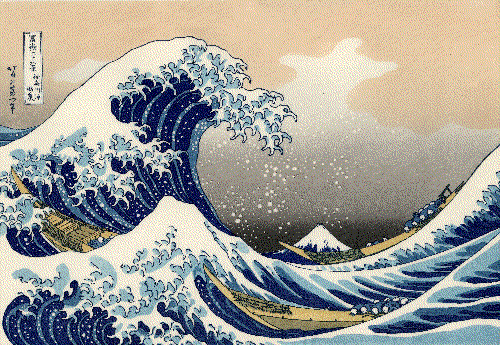
The Great Wave off Kanagawa by Hokusai.
Introduction
The coast is the part of the land which joins onto, or is close to,
the sea.
This is part of the North Cornwall coast near Bude.
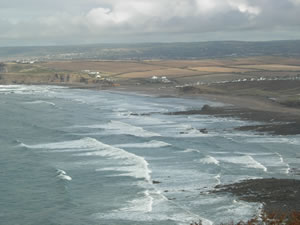
An ocean is a major body of salty water. There are 5 main oceans and
they cover over
70% of the Earth's surface. The oceans join up with each other.
97% of the water on Earth is in the oceans and seas.
The oceans are :
The Atlantic
The Pacific
The Indian
The Arctic
The Southern
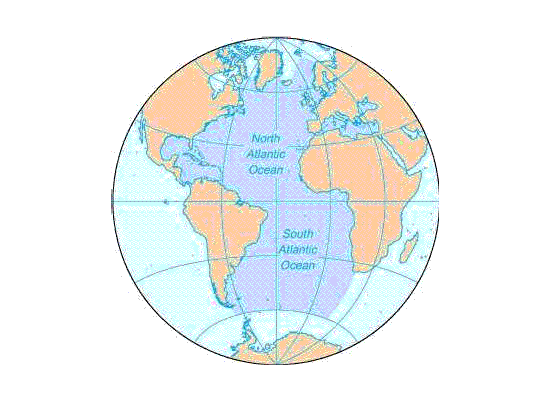
A sea is a smaller body of salty water which joins on to an ocean. Seas
can also
be very large salty lakes which don't join an ocean.
The water in these oceans and seas is moving all the time.
There are three different types of movement.
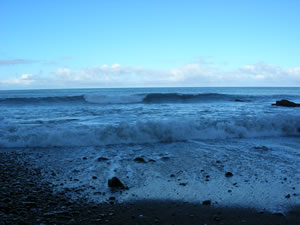 |
|
Coastal
Environment
Back
to the Top
Habitat
Back
to the Top
LIfe in the Oceans
Back
to the Top
Rocks
There are three different types of rock:
Ignious
Metamorphic
Sedimentary

This photo shows sedimentary rocks near
Hartland
Quay in North Devon.
Hartland Quay
Just click on ROCK SOLID :
Click this image to see rocks from space and then zoom in to
see them in microscopic detail

Click this link to discover how rocks are formed
This image shows the rock cycle:
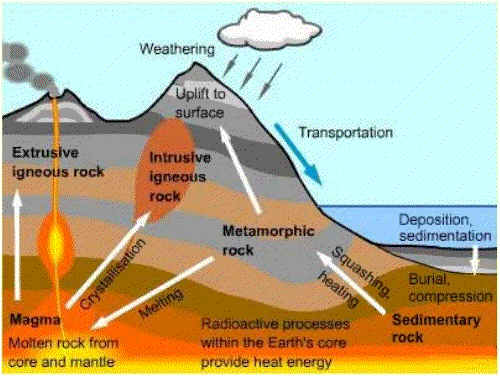
Back to the Top
Erosion and Deposition
Back
to the Top
How We Use the Coast
Back
to the Top
Managing and Protecting the Coast
Back
to the Top
Waves
( Click the links for more information
)
Waves are made by wind which blows across the surface
of the sea.
The energy from the wind goes into the water.
The
energy moves across and through the sea and this is what waves are.
If the wind is strong and blows for a long time there is a lot of energy
and big waves.
If the wind is light there is much less energy and waves are small (ripples).
If the waves have a lot of energy they will erode
the coastline.
If they have less energy they will deposit things like sand and pebbles
along the coastline.

Waves
break as they come close to the shore.
There are three special types of waves:
Rogue Waves
Tidal Waves
Tsunami
Current
The world’s oceans are always moving.
They travel in long curved paths called ocean currents.
The currents flow like rivers and carry water around the world.
The blue lines show cold water travelling from the poles (in the north
and south).
The red lines show warm water travelling from the tropics (around the
middle of the Earth).
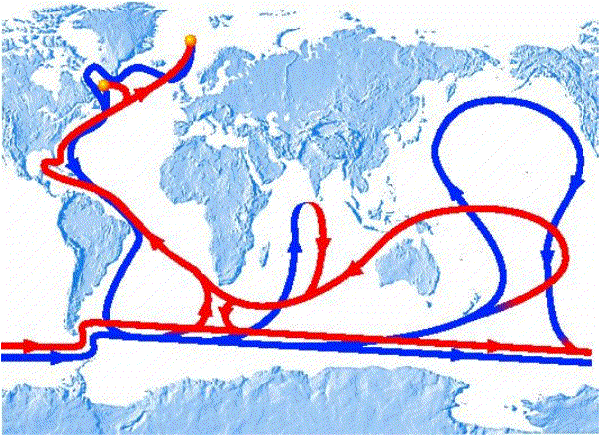
The cold water currents (blue lines) are very deep under
the sea.
The warm water currents (red lines) are at the surface of the sea.
The cold and warm water currents join up in some places.
When warm water cools it sinks and becomes a cold water current.
When cold water warms up in the tropics it rises and becomes a warm
water curent.
Ocean currents can flow for thousands
of kilometres.
In 1992 29,000 rubber ducks fell of a shipin a storm. They have been
carried by
ocean currents and have been turning up all over the world.
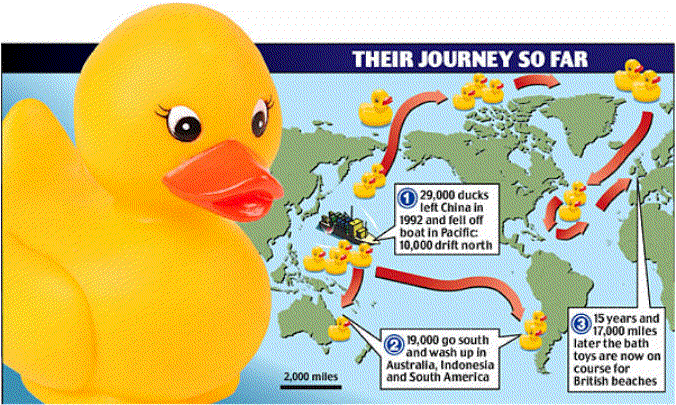
The ocean currents are very important because
they have a big effect
on our climate and weather.
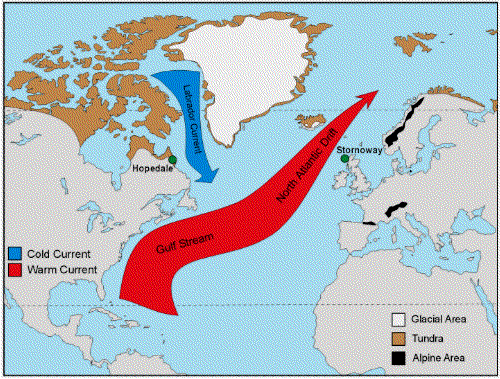 |
The
Gulf Stream The Gulf Stream is shown by the red arrow. It is a warm water current which comes from the tropics. It makes our weather in Britain and especially in Bradworthy, which is in the South West, warm and wet all year round. We suppose the Gulf Stream is a good thing because it keeps us warm but it would be nice if it didn't rain so much. Especially when we are on school trips !!! |
The
photo on the left shows us building sculptures on the beach near
Appledore. Several hours later they were gone. The Tide had come in ! |
|
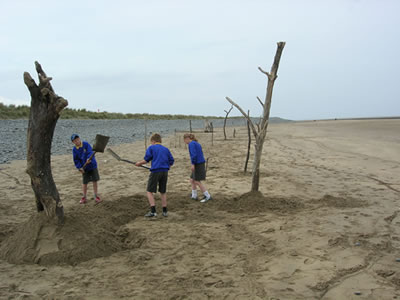 |
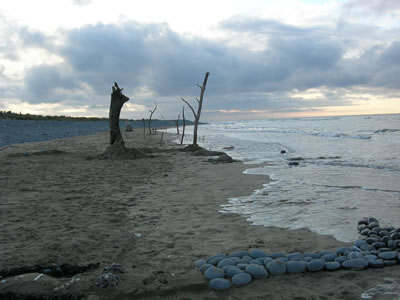 |
Tides are caused by the gravitational pull of the moon which
pulls on the water in the Earth's oceans as the Earth spins
beneath it.
When the Earth and the Sun line up there is a stronger gravitational
force and we get bigger tides called Spring Tides.
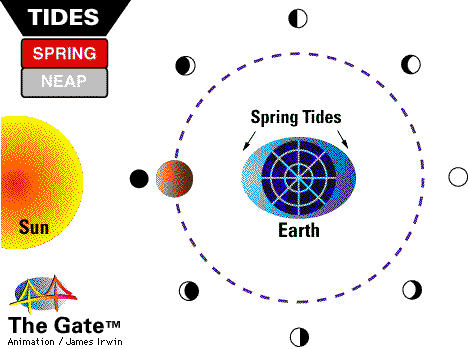

The Tide comes
in (a flood tide)
and the tide goes out (an ebb tide)
It takes just over 12 hours for this to Happen.
This means there are two High tides
and two Low Tides each day.


